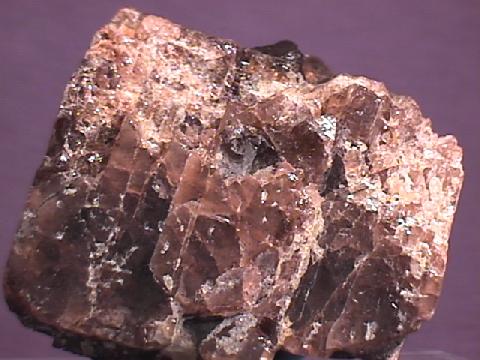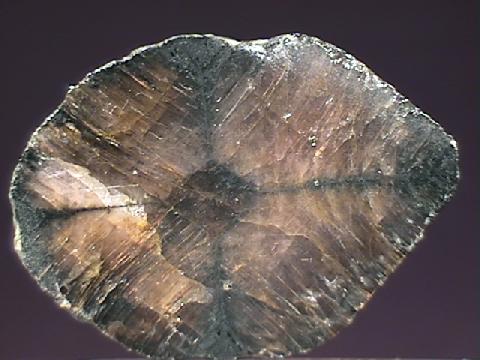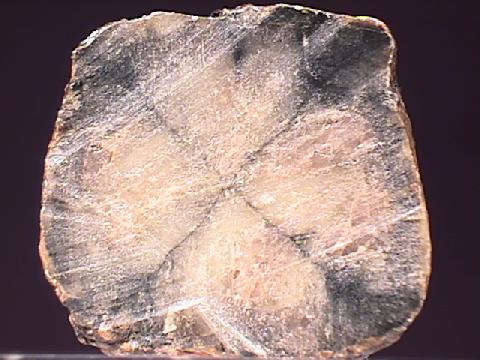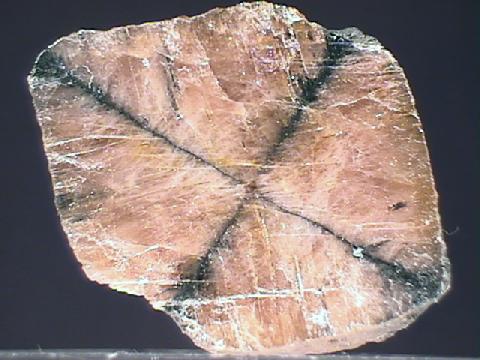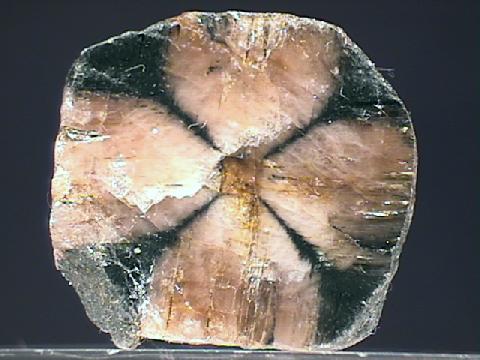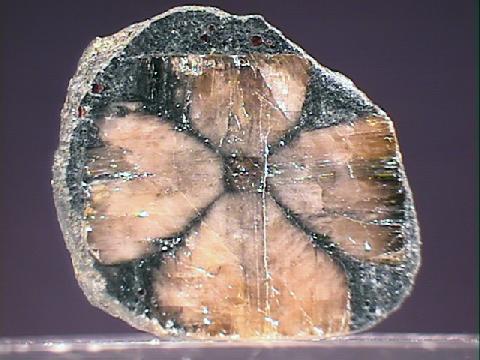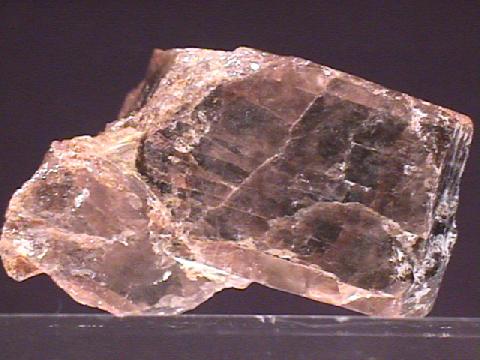
ANDALUSITE
Specimen and-4
$ 32.00
Dims: 1.5 x 1.0 x 1.0" (3.8 x 2.5 x 2.5 cm)
Wt: 1.35 oz. (38.4 g)
Malacacheta, Minas Gerais, Brazil
TTwo small, partly intergrown Andalusite crystals make up this thumbnail specimen. The larger of them has dimensions of 1.4 x 0.8 x 0.8" (3.6 x 2.0 x 2.0 cm), and the smaller has dimensions of 0.8 x 0.5 x 0.5" (2.0 x 1.3 x 1.3 cm). Both are in fair condition, as each does show some damage. However, they appear to be more damaged upon first glance than they actually are, due to uneven crystal faces and edges. Thus, their orthorhombic prismatic form is discernable, but not very good. They have a red-brown coloration and a dull waxy luster, and are translucent only around their edges due to extreme internal fracturing. These fractures, however, help to reveal an interesting optical effect- small portions of the material show a milky, glowing schiller akin to that of "moonstone". The crystals likely were surrounded by either crystalline muscovite or a mica schist, as most of their crevices are filled with such material- this is likely the cause of their lack of very good crystal form. There is no other host rock, however.

